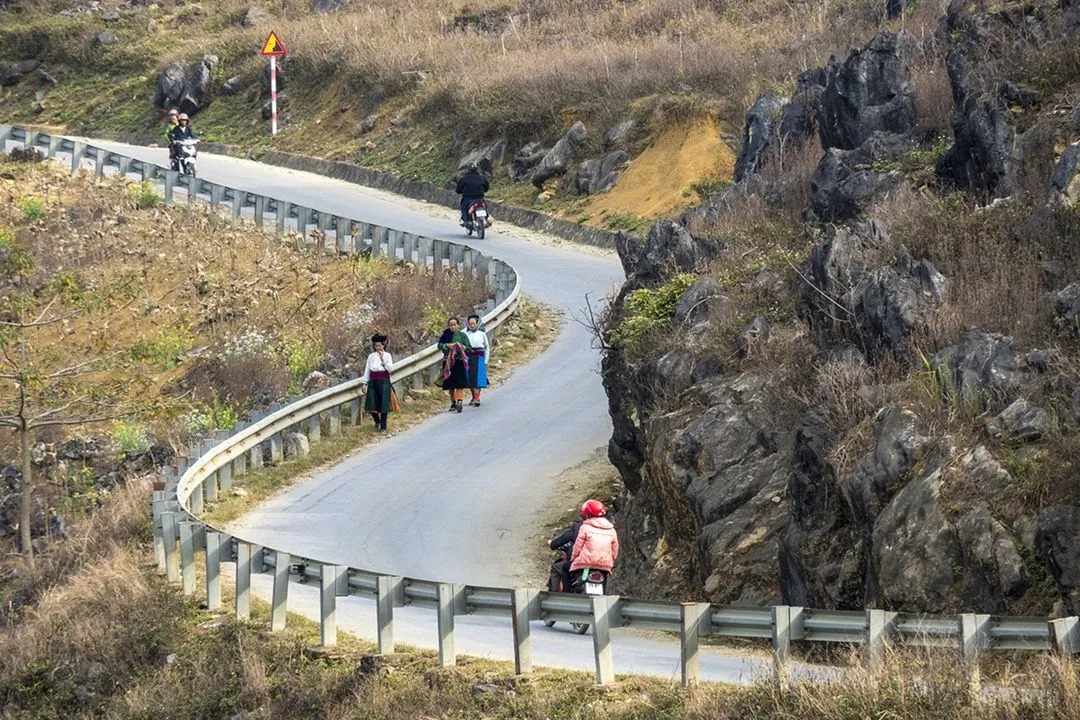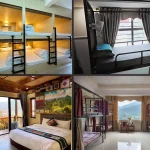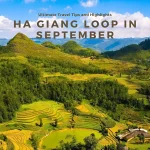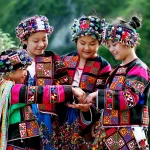Nestled in the breathtaking landscapes of Ha Giang, Lung Tam Linen Weaving Village stands as a testament to the rich cultural heritage and artisanal skills of Vietnam. Known for its intricate linen weaving traditions, Lung Tam offers visitors an immersive experience in the world of traditional crafts. This article, lets Karst Plateau explore the unique aspects of Lung Tam Linen Weaving Village.
1. Overview of Lung Tam Linen Weaving Village
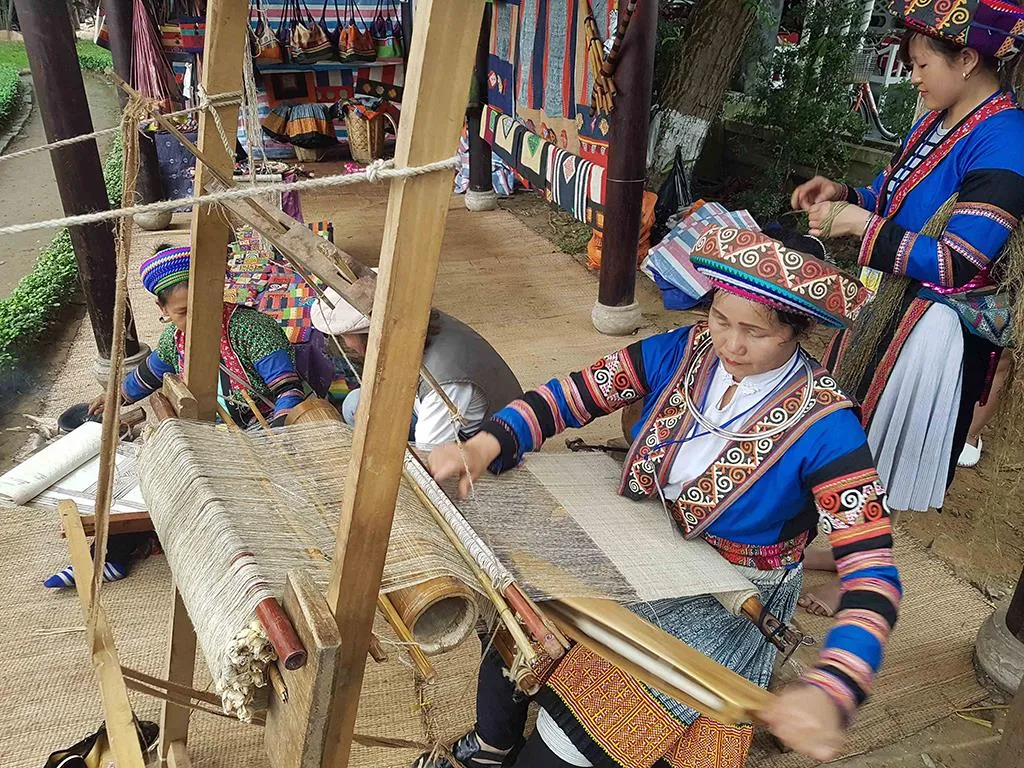
Lung Tam Village is renowned for its distinctive linen weaving technique, which has been meticulously preserved by the Hmong people for generations
When participating in the Ha Giang Loop Tour, you will definitely pass through Quan Ba district, which is home to many famous tourist attractions. Among them, Lung Tam linen weaving village stands out as a destination not to be missed.
Lung Tam Linen Weaving Village, known for its exquisite handicrafts and the intricate art of linen weaving, serves as an emblem of cultural heritage in Ha Giang province. Enveloped by misty mountains and vibrant green valleys, this village is not merely a place of craft; it represents a way of life, a sanctuary of tradition beautifully preserved by the H’mong community.
In comparison to other traditional crafts found across Vietnam, Lung Tam’s textile weaving stands out due to its unique blending of history, spirituality, and practicality. While many villages focus exclusively on commercial output, Lung Tam embodies a harmonious balance between artistry and cultural preservation. The H’mong women, often seen skillfully manipulating the looms, demonstrate craftsmanship that takes years to hone a testament to the relentless spirit of this community.
2. Where is Lung Tam Linen Weaving Village

Lung Tam Line cooperative is a gathering place for skilled artisans in brocade weaving
Lung Tam Linen Weaving Village is perched in the Quan Ba district of Ha Giang, Vietnam, a region famed for its dramatic landscapes and colorful ethnic diversity. Lung Tam is located approximately 30 kilometers from Ha Giang City, making it an easily accessible destination for travelers exploring northern Vietnam. The journey to Lung Tam Linen Weaving Village takes you through winding roads that snake along the hillsides, revealing breathtaking views of terraced rice fields and traditional wooden houses.
3. What to do in Lung Tam Line Weaving Village?
3.1 Wear Traditional Hmong Costumes
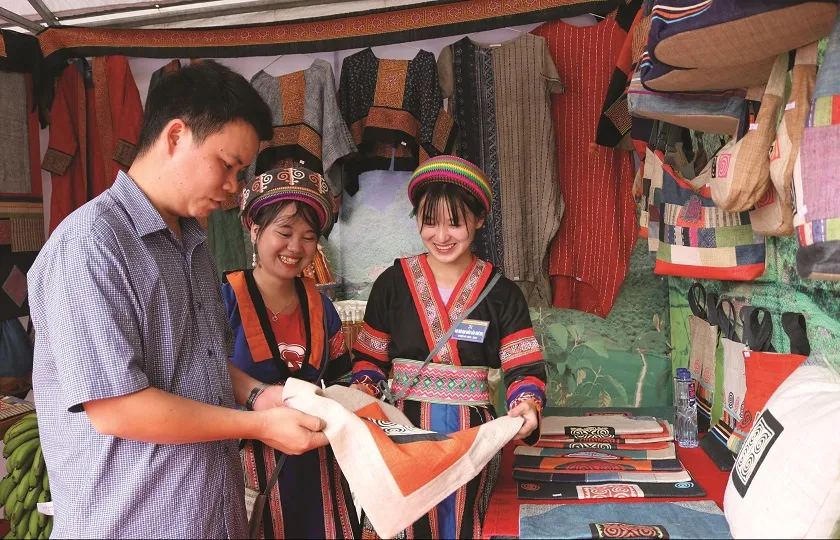
Wearing traditional Hmong costumes is a unique and culturally enriching experience
When visiting Lung Tam Linen Weaving Village in Ha Giang, immersing yourself in the local culture by wearing traditional Hmong costumes is a truly enriching experience. These costumes are renowned for their vibrant colors, intricate embroidery, and symbolic designs that reflect the rich heritage and artistry of the Hmong people. Each outfit is adorned with elaborate patterns and silver jewelry, adding to its cultural significance and beauty.
By donning these traditional garments, you not only gain a deeper understanding of Hmong traditions but also honor the craftsmanship that has been passed down through generations. Embracing this cultural practice enhances your visit and provides a meaningful connection to the local community.
3.2 Know About the Meaning of Lung Tam Weaving Village

Lung Tam Linen Weaving Village holds deep cultural and historical significance in Ha Giang
Lung Tam Linen Weaving Village, nestled in the scenic landscapes of Ha Giang, is a vibrant testament to the cultural and artistic heritage of the Hmong people. The name “Lung Tam” itself carries significant meaning. “Lung” refers to a high place or mountain, while “Tam” can signify a peaceful or serene place. Together, “Lung Tam” evokes the image of a tranquil, elevated locale—aptly reflecting the village’s serene mountain setting and its role as a haven for traditional weaving.
The village’s weaving tradition is deeply ingrained in its cultural identity. For the Hmong people, weaving is more than a craft; it is a form of storytelling and cultural expression. Each woven piece is imbued with symbols and patterns that narrate tales of nature, mythology, and daily life. The intricate designs and vibrant colors of Lung Tam’s linen products are a testament to the skill and creativity of the artisans, who preserve these ancient techniques with great pride.
Visiting Lung Tam Linen Weaving Village offers an opportunity to understand and appreciate the profound connection between the Hmong people and their craft. It is a place where the threads of tradition, artistry, and cultural heritage are woven together, creating a rich tapestry of meaning and significance.
3.4 Discover the Unique Linen Weaving Technique of the Village
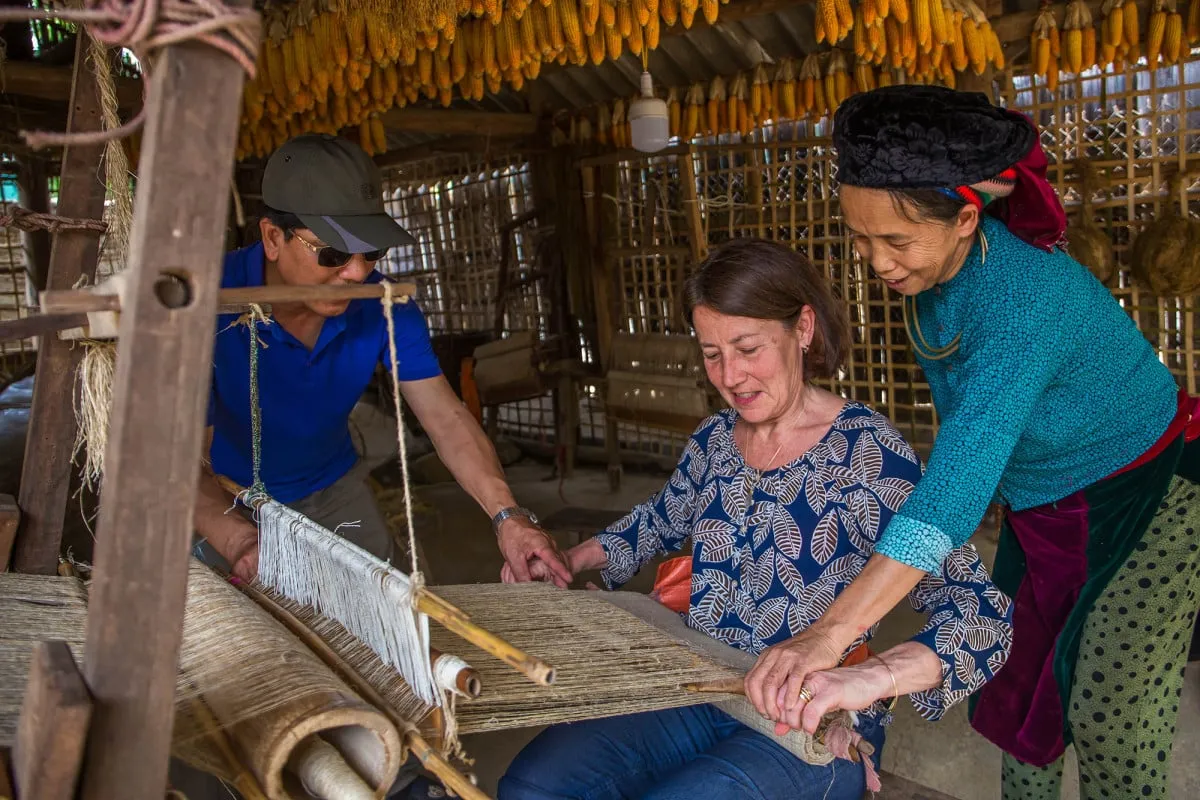
Join the brocade weaving experience at Lung Tam village
Linen is not only the main crop in Lung Tam village but also in many other villages in Ha Giang. Linen is the main raw material for the production of textiles and garments in Ha Giang. Normally, in each household in Lung Tam village, H’Mong women manage the fields to grow flax.
During harvesting, flax is soaked, separated into microfibers, and steamed until soft. The linen is then fed into a wooden weaving tool. This tool is used to weave flax yarn into sheets. The fabric is then washed several times to make it really white. The white fabric is spread on a round log and rubbed with beeswax to create softness and shine.
After that, the fabric is dipped in an indigo solution and dried. This process is repeated 5 to 6 times until the fabric is ready for use.
For dyeing, they dye their linen fibers with natural colors extracted from chestnuts, tea, and guava, avoiding the use of industrial chemicals. The dyeing process depends on time, lasting from a few days to several months. Thorough dyeing ensures the indigo color on the fabric is vivid and long-lasting.
Lung Tam linen fabric is increasingly famous for its hand-embroidered patterns, characteristic colors, and production processes that require the meticulousness and creativity of weavers.
Visiting Lung Tam Linen weaving village, you can experience weaving with H’Mong women to discover the process of making fabrics. In the past, linen was mainly woven for traditional clothing, but today, it is used to produce many unique souvenirs.
3.5 Purchase Famous Textile Products
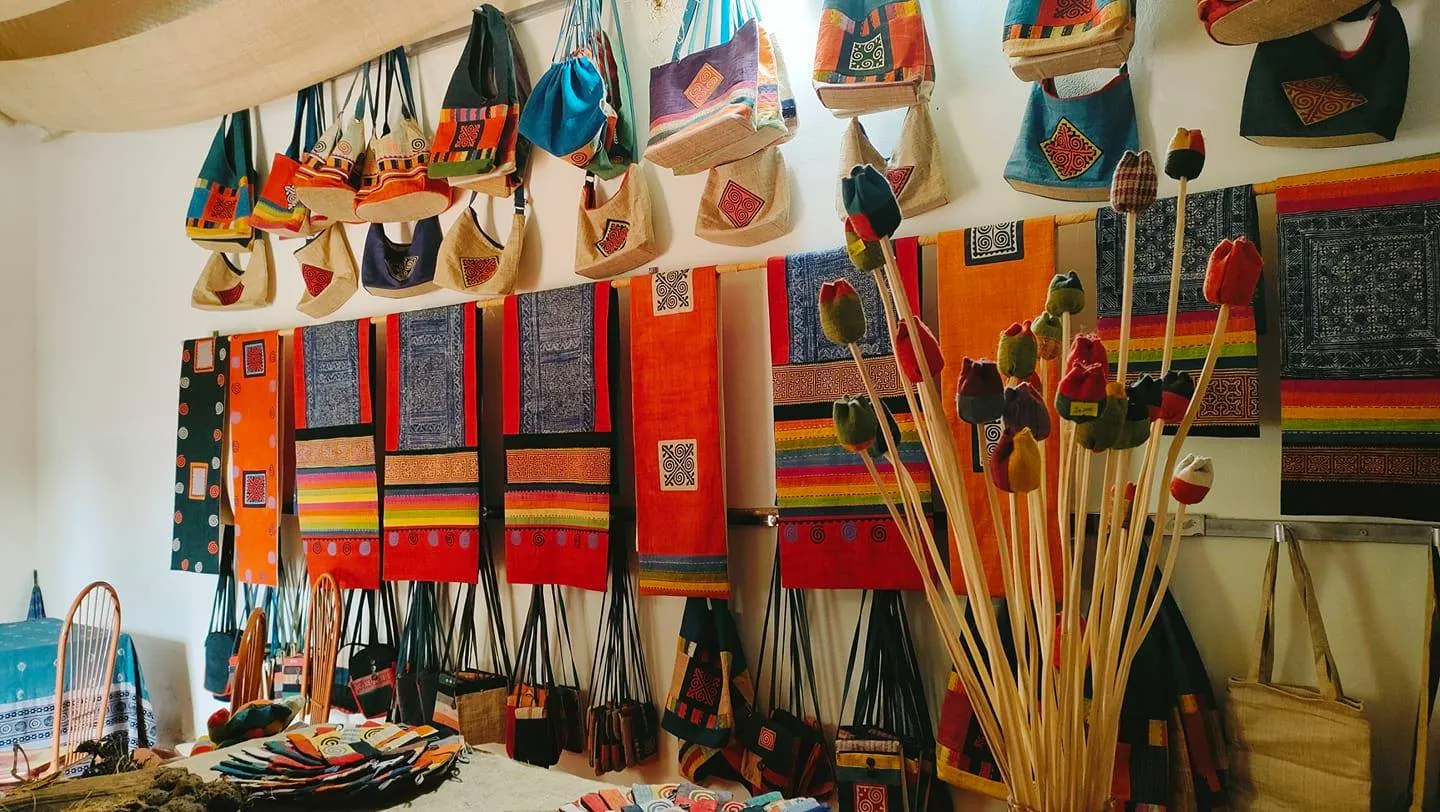
When coming to Lung Tam village, buying brocade products as gifts is a great choice
